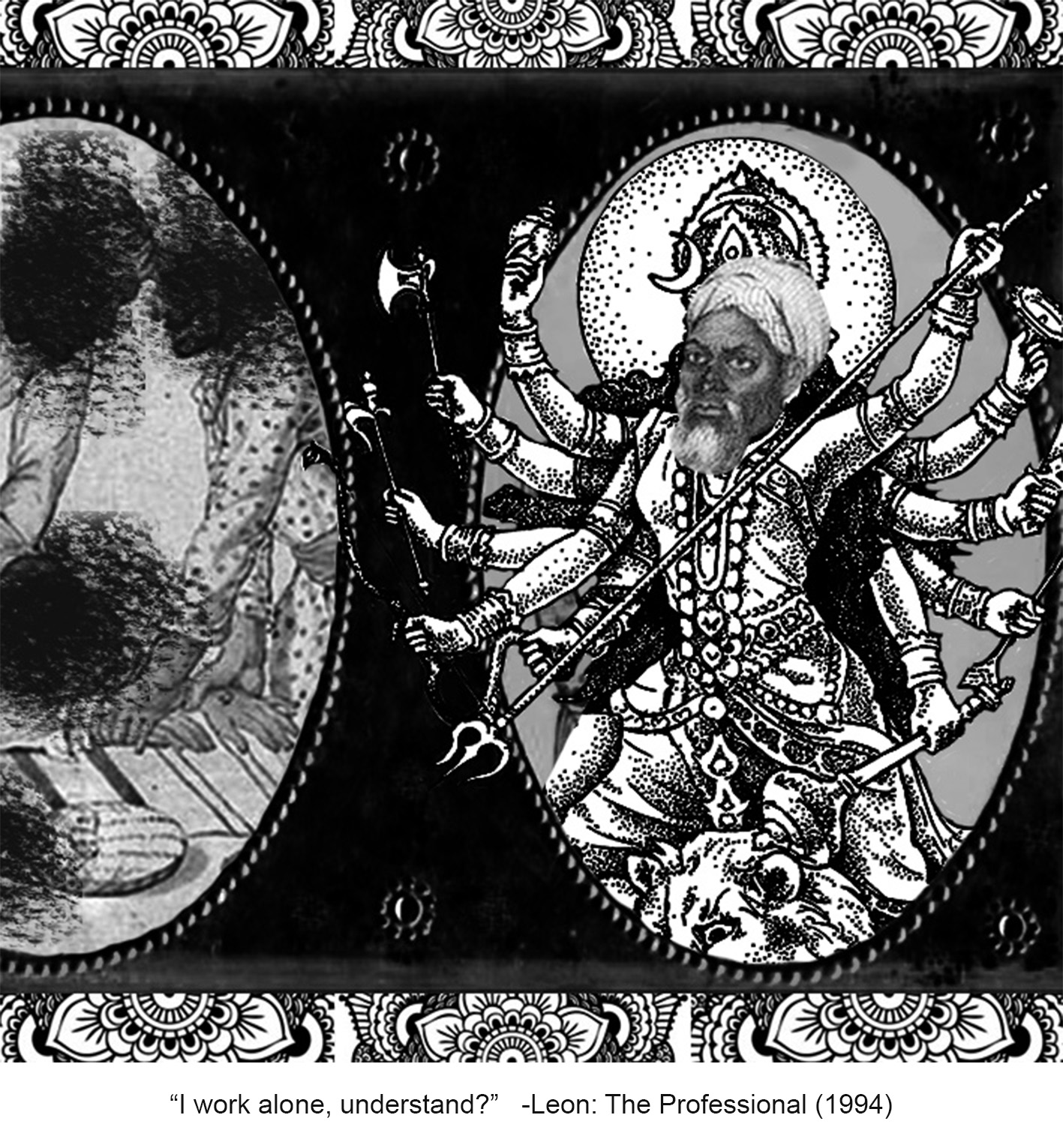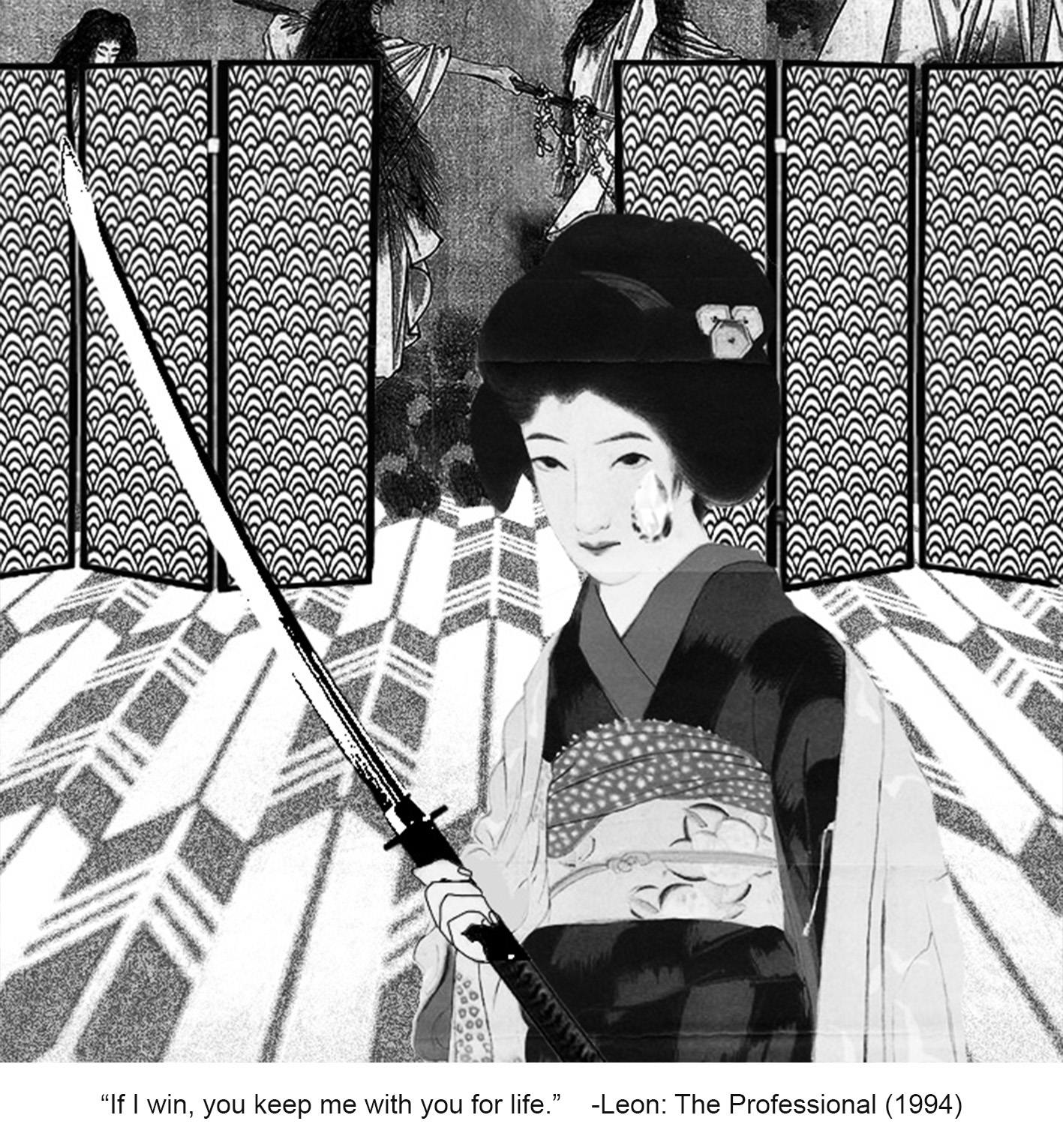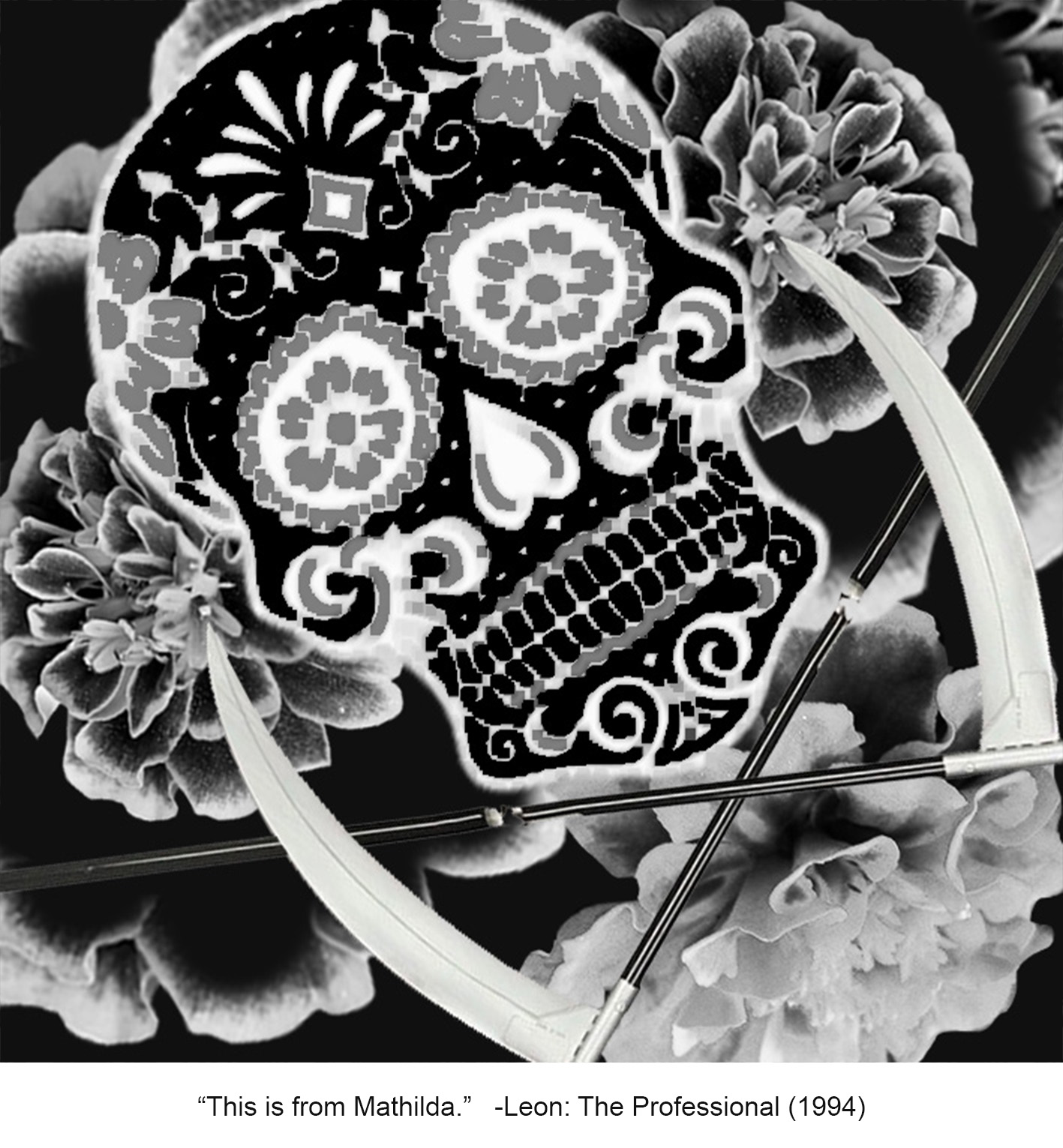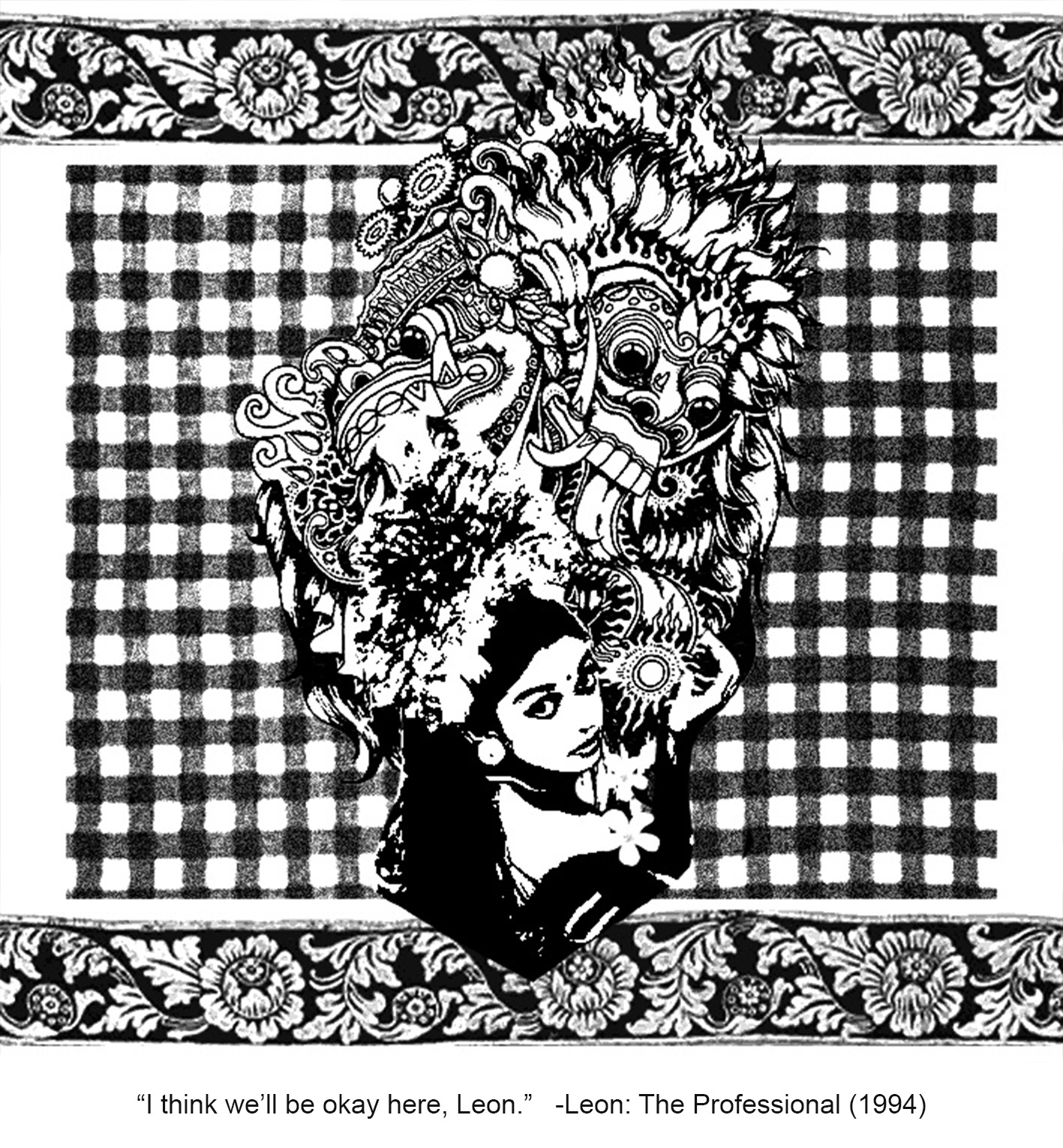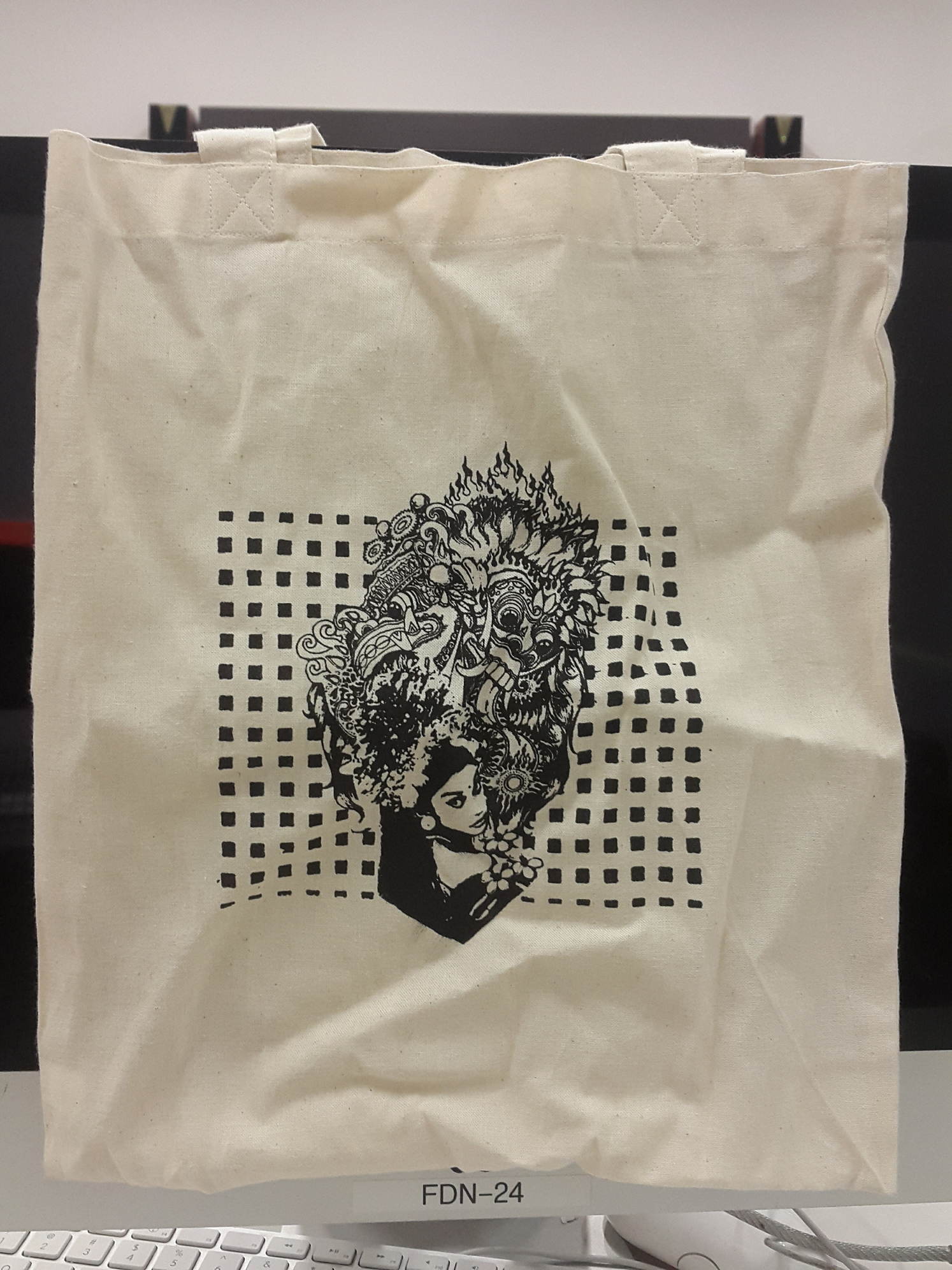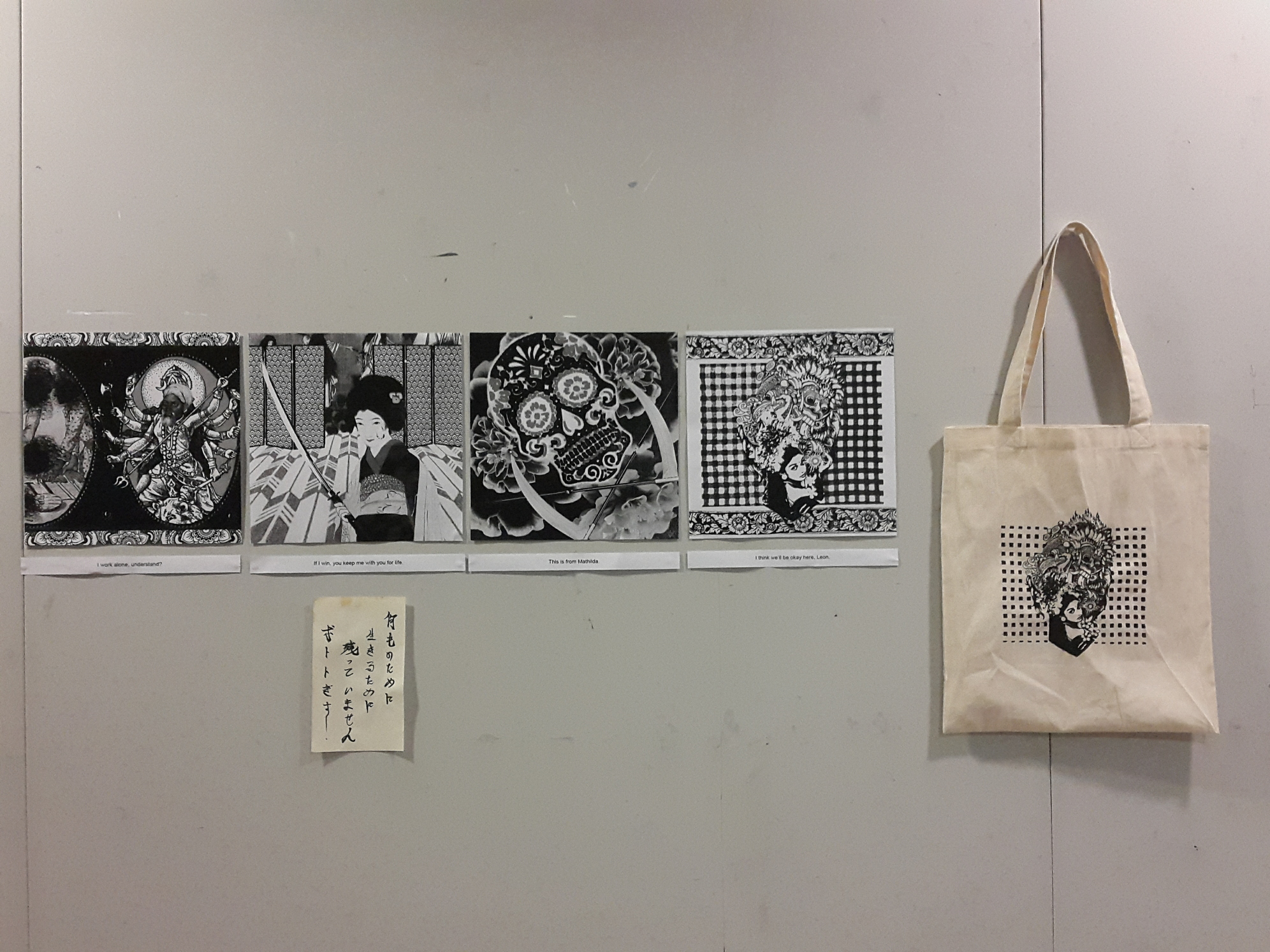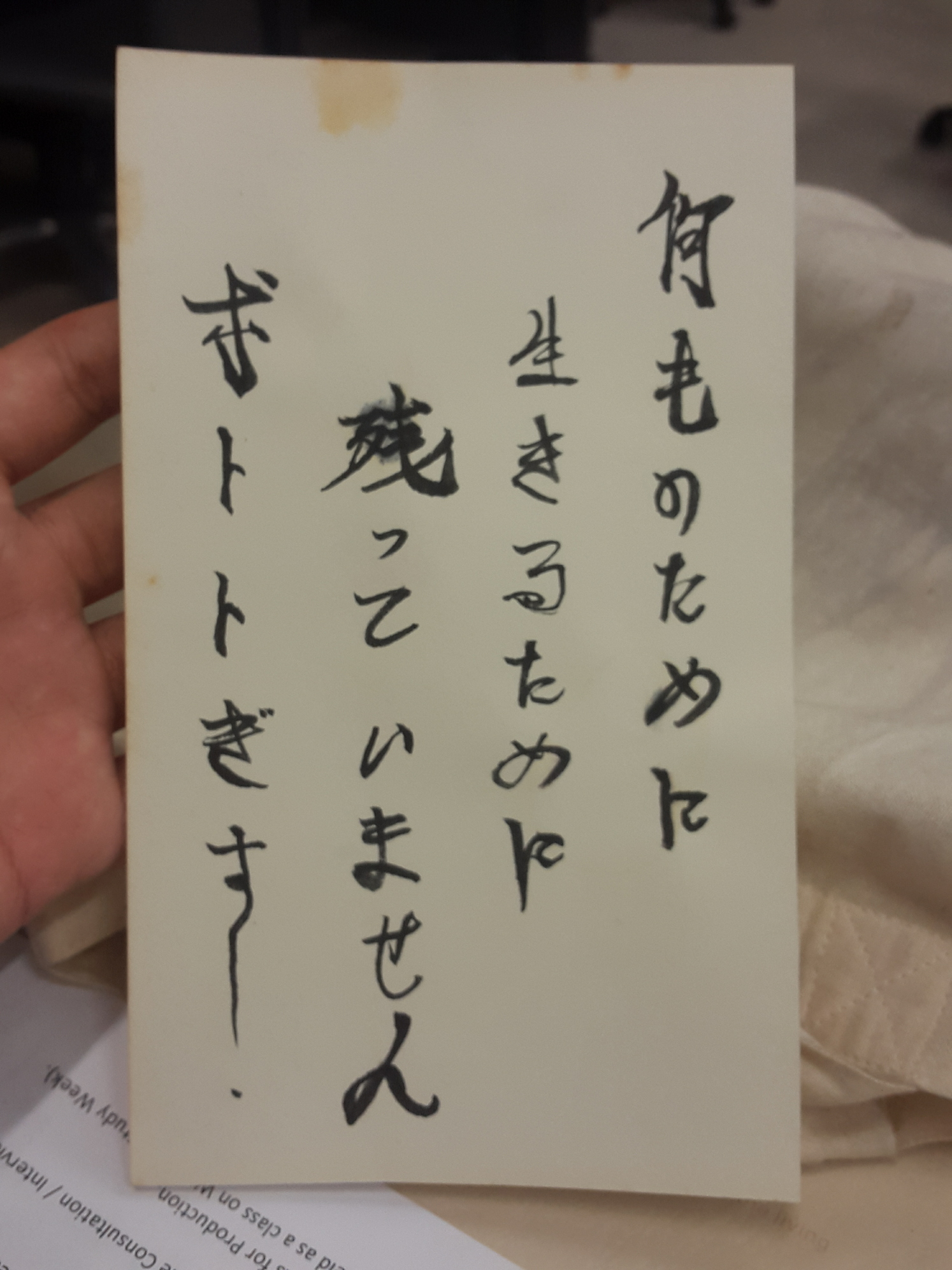I find it a little hard to believe that the project we just finished was only the second one. It felt as if we have been doing this forever. Albeit it being a challenging project, I had lots of fun, and am happy that I finally got to try my hands on silkscreening.
On this post, I will be giving a summary of my four compositions and an explanation of the overall concept. Enjoy!
◊ OVERALL CONCEPT ◊
The main concept for this project is the relationship between Leon and Mathilda from the 1994 Luc Besson film “Leon: The Professional”, one that I really enjoyed watching. I’m about to spoil the whole film here so if you don’t want it ruined for you, go and watch it first HAHA.
Okay so you’re here either after watching it or you don’t mind spoilers.
Here’s your last chance to watch the movie first if you haven’t.
In the film, Mathilda’s family is killed by a crazy corrupt DEA (Drug Enforcement Administration) officer and she seeks refuge from her neighbour, Leon, who is a hitman. Mathilda, who is only 12 years old at the time, asks Leon to take her as his protégé so that she could take revenge on, in her own words, “the dirtbags who killed her brother”. Long story short, Leon refuses at first, eventually accepts her and the two develops an unlikely bond throughout the rest of the film, each taking a place in the other’s heart that never existed before. I finally selected four quotes from the movie that are key points in the film and describes what happened to Leon and Mathilda, and their relationship in the film.
While initially I wanted to use the many iconic objects from the film to make my compositions, I realised that doing so would make my renditions too literal, which is exactly what the project is NOT about. It was really confusing because after watching the movie, one would definitely have preconceived images directly related to the film. After enlightening consultations with Joy, I finally understood that there are many ways in which to tackle the project brief. I decided to take a look at the relationship between Leon and Mathilda from the point of views of different assassination cultures from around the world. I used icons and symbols from the different cultures, and also, by Joy’s suggestion, explored the compositions based on the art practices of the area, which I really want to thank her for. (Thanks Joy!!)
Without further ado, here are the final four compositions!
NUMBER ONE ◊ INDIA
The quote here describes Leon’s inherent cold-heartedness towards Mathilda, after spending a lifetime of putting aside emotions as part of his job. This was him rejecting Mathilda’s request of taking her as an apprentice.
I chose India for this piece. I took the Indian Hindu goddess Durga, a multi-dimensional goddess of power and strength, mother of the universe, to represent Leon. The many hands wielding different weapons symbolise Leon’s individualistic and independent nature, as he does everything by himself. Instead of choosing Kali or Shiva who are deities of destruction and death, I chose Durga to symbolise Leon’s hidden kind and caring nature, that he is actually good.
I replaced the head with the head of a thuggee/thug, an Indian professional robber/murderer who typically travels in gangs, gains trust of his victims and strangles them to death during the journey. To describe Leon’s defiant nature, and also his personal code of working alone, I included a group of thugs on the left frame with their heads marked out, showing their irrelevance to Leon. Moreover, the placement of the frames, which is cut off-centre, is done to suggest the presence of other frames containing other pictures of thugs outside of the composition. The framing is inspired by Mughal art, paintings that originate from South Asia, and I used one particular painting to create this piece.
I also used the traditional Indian henna design of the mandala, which symbolises the universe, as a border, to indicate how this is the universe that Leon lives in.
NUMBER TWO ◊ JAPAN
This quote is what Mathilda says when she is about to shoot herself in the head in a self-initiated game of Russian roulette. At this point of time, she has nothing to live for anymore if Leon does not take her in.
I chose Japan with the ninjas in mind, but then I remembered about the old Japanese act of voluntary suicide, harakiri/seppuku, and thought that it would be perfect for this scene. The ceremonial disembowelment is usually done with a tanto (short knife), but can also be done with a tachi (long sword). I chose to use a katana (which is a tachi), to heighten the feeling of risk and intensity, making it look more dramatic.
Shinigamis, death gods who lure people to take their own lives, can be seen in the background, giving the piece a slightly eerie feeling of looming death.
I also included two characteristic patterns from Japan, “Nami“, meaning waves, on the screen-dividers, and “Yagasuri“, meaning arrows, on the floor to replace the usual tatami. Nami means strength and represents Mathilda’s courage in her decision. Yagasuri means determination and represents Mathilda’s resolve to kill herself.
Mathilda is represented by the maiko, or apprentice geisha, in an illustration style that is typical of Japanese paintings and ukiyo-e, which I referred to when making this composition. Ukiyo-e, a genre of art that features woodblock prints and paintings, makes use of asymmetry and slight perspective, which I applied in this composition. I divided the piece to foreground (maiko), middle ground (screen-dividers) and background (shinigami), with all of the elements placed slightly off-centre.
I carefully planned the arrangement such that it is hinted to the viewers how Mathilda is on the verge of death. I made use of the screen-dividers (common image in ukiyo-e) to create a clear division between the living world (where the maiko is) and the underworld (shinigamis). Directly behind her is the opening towards this underworld, and together with the yagasuri pattern deliberately pointing towards the underworld, this illustrates Mathilda’s resolve to head towards death. The yagasuri pattern pointing towards the background also helps to create an illusion of depth and perspective, which is an element of the art of ukiyo-e.
NUMBER THREE ◊ MEXICO
These were Leon’s last words (cries) as he sacrificed himself to save Mathilda. He has gone from an aloof, cold-blooded murderer to a man who is again, capable of feeling love and care for another person.
I chose Mexico for this scene, originally just because I wanted to portray Leon as a Mexican sicario, a hired professional assassin that works for the organised drug cartels in Mexico. However, sicarios also used guns primarily, and I thought that this was too similar to the movie’s Western usage of firearms. When I researched about Mexican art, I am reminded of the famous and beautiful sugar skulls symbolic of the Day of the Dead and realised that I could also use this to recreate Leon’s death scene. Branching from Mexican folk art, this colourful, decorative style is used in the Day of the Dead celebrations, or Dia de los Muertos.
I chose a few symbols from the art style and celebration to use as elements of this piece. The calavera, or sugar skull, represents both Leon and death. The scythes are representative of Santa Muerte, the Mexican female folk saint who is a personification of death. She is believed to deliver people safely to the afterworld, and typically holds a scythe, along with a globe, or other things. The skull and scythes are arranged in a typical skull and bones arrangement, and further emphasises death, with the blades placed at the nape of Leon’s neck. This also alludes to the act of decapitation, characteristic of the sicarios’ way of finishing off their targets by mutilation. Behind is a blooming pattern of marigolds, specifically the cempasúchil, or the flor de muertos (flower of the dead), which is the main flower used for the Day of the Dead celebrations. They are arranged to create a haunting yet beautiful aura that looks like fireworks, and also to represent the explosion of grenades in the movie.
I also did not put the skull in an upright position to mimic Leon’s position of death in the film, where he lied on the floor. I feel that this also made the composition more dynamic and less boring.
NUMBER FOUR ◊ BALI
The last quote is the scene where Mathilda buries Leon’s plant (also an icon of the movie) in the garden of the school where Mathilda found refuge in, after Leon’s death.
I chose Bali for this scene. I have always had an attachment to Balinese culture, and this was the first culture I researched further on, based on my then knowledge of it. I already knew some of the patterns that I was going to use, such as the poleng (which I will explain soon). Mathilda is represented by the girl in traditional Balinese costume used in the pendet dance, a dance that I am familiar of. The dance is characterised by the headpiece. The pendet dance is a welcome dance, a dance of greeting. Here, I used it to represent Mathilda’s welcoming of her new life, and the transition between her previous life and her life after the death of her family and Leon.
The original Chinese Evergreen plant from the movie is replaced by the kamboja (frangipani), a flower that is considered holy in Bali. I made use of its interesting duality as it also represents death and bad luck in the Javanese context.
Behind her is the Barong, a lion-like king of spirits, leader of hosts of good, of the Balinese Hindu mythology. The Barong is a symbol of protection, looming over Mathilda, that hints at Mathilda being safe from then on, after Leon’s sacrifice. Moreover, I used a sheet of poleng fabric at the background to emphasise protection, as the black, white and grey plaid is a pattern used for protection typically seen in Bali.
To complete the composition, I added a border of perada, a fabric used by the rich, inspired by its similar pattern seen in the carvings of typical Balinese furniture.
◊ SILKSCREEN ◊
Silkscreen was fun to do. Although I faced some difficulties in the second silk-screening session, when I had to get it printed on the tote bag, I am quite happy with the final result.
(I will upload a better picture when I get to iron it out)
◊ PRESENTATION ◊
This is how I presented my final work.
I decided to include a supplementary element in the presentation. Under the Japanese composition, I pasted a death poem, in Japanese, that I imagined Mathilda to have written before proceeding to kill herself. Writing a death poem is part of the ritual of harakiri/seppuku, and I felt that it was such a melancholic and beautiful way to leave with your last words in a string of poetry.
From right to left: Nani mo no tame ni, ikiru tame ni, nokotte imasen, hototogisu.
Translation: Nothing left to live for, the cuckoo cries.
The poem describes how at the point of time, Mathilda has lost everything and is ready to die. “Hototogisu”, or the cuckoo bird, is a bird recognised for its beautiful voice, but is also considered a messenger of death. It is a phrase usually used to poetically signify death.
These are a few things that I tried to make sure were consistent in the four compositions.
- Overall balance in the composition, even when I arrange the elements in an asymmetrical way.
- Presence of central character.
- Simplicity and subtlety of hidden messages through the symbols.
- Very subtle dark, light, dark, light look. This is purely for aesthetics (It felt weird with only the third composition one being very dark), to balance the look of the four compositions together, and to create rhythm as the eye gazes from the left to the right.
Presentation generally went well, and I managed to say most of what I wanted to say in the time limit, but I did forget to mention a few things due to a slight panic when the alarm rang. Hopefully next time my nerves don’t get the better of me.
Overall, I really enjoyed the process, getting to know so many different cultures and really putting a lot of meaning into my work, which I noticed is what I like to do. I also got to keep the essence of the movie and managed to bring forth the feelings I have for the movie, and made this project a meaningful one.
On to the last project of this semester!


